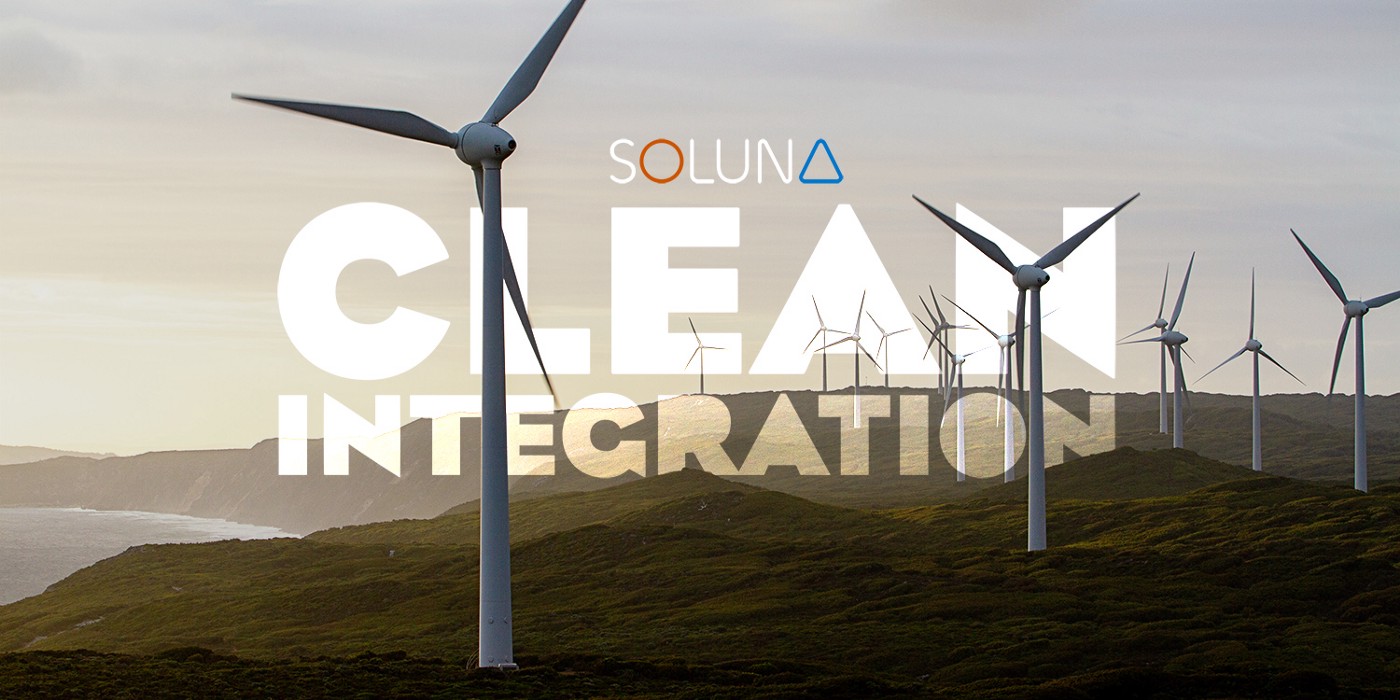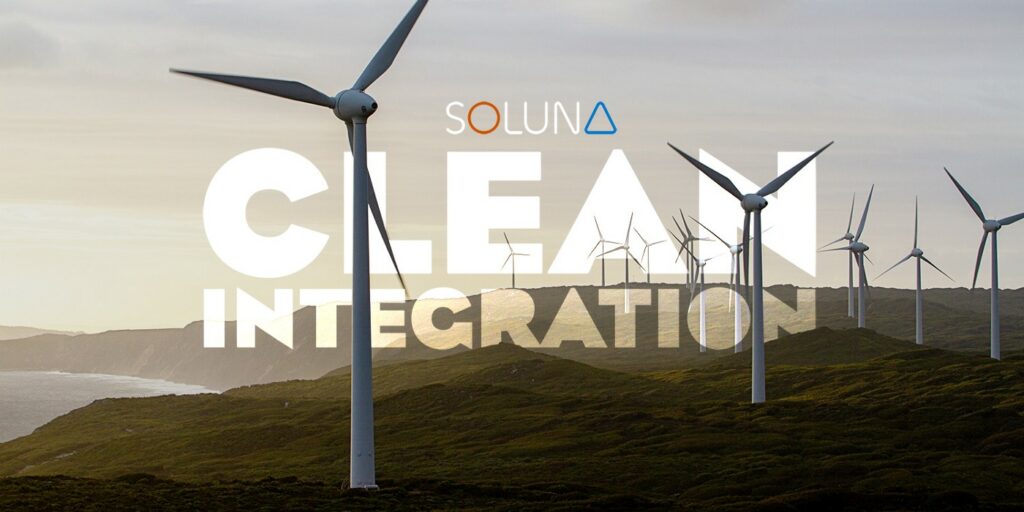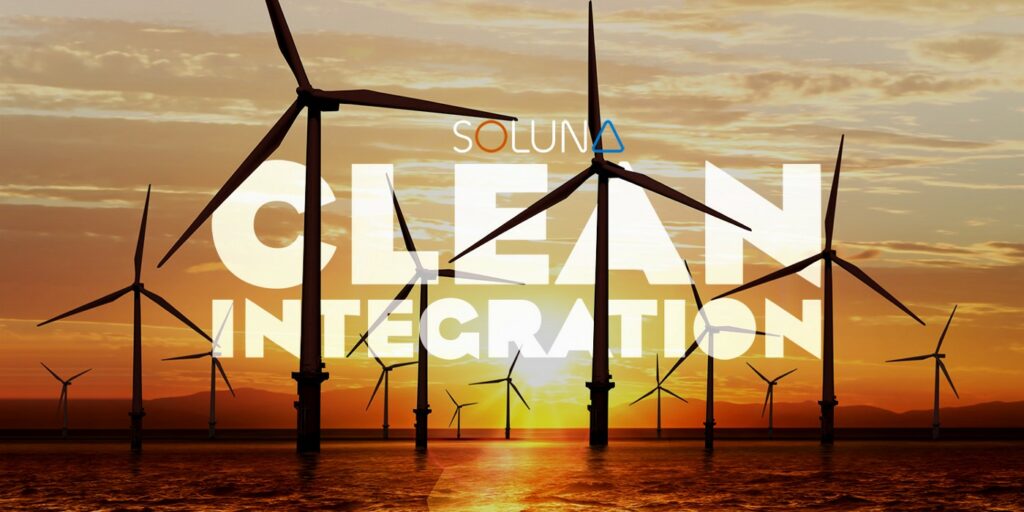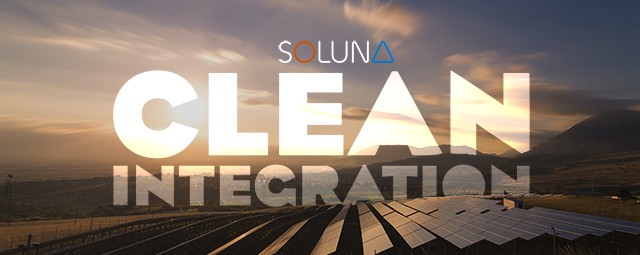Listen now on Apple | Spotify | SimpleCast
Soluna CEO John Belizaire meets with Lee Taylor, founder, and CEO of risk management and information services company REsurety, on Soluna’s Clean Integration Podcast to discuss VPPAs (virtual power purchase agreements), LMEs (local marginal emissions), and managing renewable energy risk.
Lee founded REsurety in 2012 to commercialize research that he conducted at Dartmouth’s Tuck School of Business. Since then, REsurety has supported over 7,000 megawatts of renewable energy generation capacity and counts many of the world’s largest and most sophisticated companies as its clients and partners.
(This transcript has been edited and condensed for print.)
Can you tell us the story of how you went from your research in grad school to founding REsurety?
Lee Taylor: I was a first-year business school student, and one of the requirements in your first year at Tuck is to do a project for an outside company or set of companies to try to solve real-world problems. Take the classroom out to the real world. I was working with a team at Tuck, and several groups brought the same problem: how do you price and manage the intermittency risk of a renewable energy project?
Renewables have a phenomenal economic advantage over fossil fuels, even not taking into account all the environmental benefits. But that comes at a cost; the fuel is free, but when and how much of it shows up at any time is uncontrollable and unable to know with certainty.
My team studied what it would cost to hedge that risk for parties who don’t want to be exposed to the risk. Along the way, I realized this was something that needed solving in order for renewables to scale the way they need to. That was the origin, started REsurety in 2012 and has been running since then.
What is REsurety’s product, exactly?
Lee Taylor: REsurety has two different business lines. One is risk management; the other is different information services that overlap. It’s not an insurance product. It’s often offered by insurers and reinsurers, but it is a commodity derivative. The products that we support are CFTC, and NFA regulated. These are electricity derivatives as tools, linked to generation or the weather that dictates that generation.
As a starting point, using your example, you’re a wind farm. Either you’re about to be built, you’re trying to get built and raise capital, or you’re already up and running. You’re uncontracted so you don’t have a PPA or a bank hedge. You’re just going to sell the power that is generated whenever it’s windy for whatever the clearing price is during that hour, and that’s going to drive your revenue.
That revenue is highly variable based on three factors: the average price of power over some quarter or the year, the total amount of power you generate, and then what’s often referred to as shape, which is how well wind speed correlates with power price. So average power prices can be very high, but if prices only spike when wind speed dies, then you, as the wind farm, captured very little of that value. Or vice versa, if you happen to have a high wind event during that price spike, you’ve captured an abnormally high amount of that average price.
Price, volume, and shape are really the three things that drive your revenue. You can have pretty enormous levels of uncertainty about what future revenue is going to be, both high side and downside. If you’re that wind farm, and there is more volatility than you want to hold or your lenders or investors want you to hold, you’ll want to hedge some or all of that risk.
One product we have is called a revenue swap, where we all agree that next year, the expected revenue from that project is 10 million dollars, but it could be 4 million, or it could be 20 million, depending on price, volume, and shape. A hedge provider comes and looks at that and says, “Okay, well, I’ll guarantee 9.2 million.” On average, you’re going to give up $800,000 of expected value because you went from 10 million to 9.2, but you’ve locked in 9.2. So if you end up having a 7.2 million revenue year, you get a 2 million check from the hedge provider to make sure that your revenue plus your hedge settlement lock in that 9.2 million. That’s the general concept for a seller of power: you convert a variable future revenue stream into a fixed known revenue.
Suppose instead that you are the buyer of power. If you are a sustainability-motivated buyer who has signed a power purchase agreement with a project and you’re receiving renewable energy credits associated with that PPA in order to achieve your own sustainability goals, unless you have a facility that’s consuming electricity at the same time or in the same location, you have a speculative financial position exposed to that project’s revenues. So if you’ve bought power from that project, again, you might expect the settlement to be $0 in a given year, but you could make 10 million, or you could lose 10 million in a given year as the buyer of power, depending on the price of power, windiness and timing of generation.
Similarly, a hedge provider can show up and say, well, I’ll lock in an $800,000 loss. So again, I’m going to charge you an $800,000 premium off of your expected value. But if you have a negative 10 million settlement a year, I’m going to write you a check so that you make that back. Or if you have a positive 10 million settlement a year, you’re going to pass that through to me. You convert a variable future settlement of your PPA into a known cost or known value, depending on whether your contract is above or below the expected market price for the period you’re hedging.
John Belizaire: Now it’s clear, in addition to those products, you also provide a host of different analytics. Really in-depth data around what’s happening in the market, market performance, et cetera.
What kind of insights are you seeing coming out of that data and what does the landscape look like right now?
Lee Taylor: In short, very high volatility.
In 2020, demand for energy was down because of the pandemic, and a mild global winter pushed gas prices very low. There were whole months in the middle of the country where the production weighted value of power from some projects was $3. Normally, you’re looking at $20, $30, or $40 a megawatt hour.
Then in Texas, in particular, but elsewhere as well, the winter storms in 2021 caused the highest energy prices in the history of mankind, which caused all sorts of volatility, both gains and losses for folks, depending on whether you happened to be a generator or a consumer. Then you look at where we are today when a combination of war and weather and politics are causing natural gas prices to be $6 in some places, an all-time high in recent memory. So you have high highs and low lows.
Essentially, the energy market is in a state of high volatility.
How do you see this concept of bringing flexible load behind the meter? Can this serve as a physical risk mitigation or energy cost mitigation for projects?
Lee Taylor: The way we think about it is that supply intermittency on the grid has two solutions. Both are necessary; neither is sufficient on its own. Historically, the burden’s almost entirely been on the supply side to try to figure out how to match up with demand. Demand response, and dispatchable computing, are the things that can help supply meet in the middle to make sure that we are bringing demand into the periods where you have that low supply. The ability to move demand into the periods of oversupply is a major source of stability in power markets, rather than having prices that are $3,000 one hour and negative $30 another hour, which is not healthy long term.
In addition to the power price changing wildly every hour, the emissions impact of demand and supply is changing every hour as well. Dispatchable computing plays a component there as well.
John Belizaire: REsurety helps corporate clean power purchasers manage their energy costs through what I’ve read is a virtual power purchase agreement or a virtual PPA.
Can you explain how a virtual PPA works?
Lee Taylor: So a virtual power purchase agreement (VPPA) is a financial contract; it’s also called a contract for a difference in power price. If someone says I’ve signed a VPPA for power from wind farm A in north Texas at $20, what they mean is that at the end of every month, they’re basically guaranteeing $20 per megawatt hour to that project. At the end of the month, that project’s going to say I produced 10-megawatt hours and the realized value of power for my production was worth $25, so $5 above the PPA price. In that case, the power price was above the PPA price, so the project writes a check to the commercial industrial buyer for $5 times their generation (10-megawatt hours); they owe $50 to the CNI buyer of the PPA.
If the flip side happens and they have a low price and similarly produce 10-megawatt hours, the corporate buyer of the PPA has to write the project a check for $8 times generation 10 or $80, so the project earned $12 in the market and then received $8 per megawatt hour from the corporate buyer.
A virtual power purchase agreement is effectively a guarantee on the price of power.
So why is it called a virtual PPA? Because it’s not about the delivery of the electrons, it’s about the fixing of the power cost.
Lee Taylor: Correct. So a physical power purchase agreement is when you’re making a contract to actually buy the electrons that are coming off of that project. A virtual power purchase agreement just means it’s a financial swap and not a physical purchase of power.
The project is effectively running a merchant plan. So they’re just bidding into the real-time markets at their location as they see fit. They earn revenue from that. And then they separately have this virtual power parts agreement, a financial contract with a third party, the settlement of which helps them manage the volatility of the revenue that comes from that merchant’s operations.
John Belizaire: I want to talk about something you released recently called the local marginal emissions carbon data tool. I guess it measures the carbon impact of clean energy projects. Could you talk a little bit about that?
What is this carbon data tool that you’ve created?
Lee Taylor: So we actually first released this in our first market, which was ERCOT, in the middle of last year. A couple of weeks ago, we released into a second market, PJM for the Mid-Atlantic region. Location marginal emissions are just a measurement of the carbon intensity of any incremental consumption or generation at a particular location at a particular time. In power markets, value in a dollar perspective is defined as locational marginal price. At every location at every moment, you can calculate the value of injecting one more megawatt hour of electricity into the grid or else drawing that power out.
If you’re going to inject one more megawatt hour into one location, that means a plant somewhere else in your grid is shutting down to accommodate the fact that you’re bringing that additional load in. That has a measurable carbon impact. Just like power prices, hour by hour, location by location, emissions rates can change fairly dramatically.
You’ve got this huge range. Depending on where and when you’re consuming electricity, and where and when you’re generating electricity, the carbon impact of those activities can be very, very different. Locational marginal emissions lets you measure that variability in a way that average emissions don’t.
How have your customers responded? It seems like a super cool tool.
Lee Taylor: Very positively. We break our customers down into four categories. So there are the consumers of electricity, these are the Microsofts and the Akamai’s of the world who are using locational marginal emissions to quantify the impact of their existing, clean energy contracts. They already have wind contracts and solar contracts, and they’re looking to measure the carbon impact of the clean electrons they’re buying and also inform which projects they want to contract with next. There can be significant differences between projects. If you look at ERCOT as an example, you can have 50, 60, or 70% differences in the carbon intensity of one West Texas solar project versus another. So as a buyer of power, you want to know that before you’ve signed the PPA with that project and locked in your commitment to them for 10, 15, or 20 years.
The other group that is using our product most actively is storage because storage is just load and generation combined. When you think about average emissions, if you’re averaging over time and space for emissions factors, almost every storage project looks like a net emitter of carbon because the route of efficiency is less than a hundred percent. They cause more generation to happen and thus have the reputation of causing emissions. In some cases that’s true, but in some cases, it’s definitely not true.
A storage project, for example, can be in a location where you have an oversupply of clean energy whenever it’s windy or sunny. You’ve got a bunch of curtailed electrons where projects are being shut down due to that oversupply. A storage project can charge with those electrons that are otherwise being curtailed. There is zero net carbon impact of their consumption of electricity. If they then sit there and wait until the sun goes down and the wind dies and a coal plant ramps back up and they discharge during those hours, when coal’s on the margin, they are crowding out high intensity, carbon emissions, electrons with carbon-free electrons and actually reducing the carbon emissions of the grid through their own dispatch. So that’s another group.
Lastly, and this is something I think we should talk about with your business, is dispatchable load demand response, because if you are consuming electricity for crypto or any other reason, and then you shift your business model to consume electricity from periods or locations or times that are abundant in renewables, the emissions intensity of your activities goes way down. Locational marginal emissions lets you measure that for the first time.
What does the war between Russia and Ukraine mean for renewables? Is it a catalyzer for more renewable energy? What’s your take on that?
Lee Taylor: It’s impacting energy markets globally and it’s certainly a contributor to the price of natural gas, which brings up the value of power generally and also highlights the volatility of something that requires fossil fuels. It’s not like geopolitical activities are going to cause wind or sunshine to get more expensive overnight. In terms of the impact on renewables, I think domestic policy issues are having a bigger impact and causing greater uncertainty, the fate of the Build Back Better bill, for example.
There’s a lot of talk around the nexus of crypto and clean energy. What do you think are the biggest challenges or opportunities there?
Lee Taylor: I think there is an opportunity for crypto to be a democratizing force, and also crypto mining is energy intensive, and energy-intensive industries drive emissions. So I think the biggest opportunities are a collaboration between the renewables industry and the crypto mining industry to reduce that intensity as much as possible.
I think it’s critical that it gets done particularly in the absence of much success on the transmission side of the clean energy industry’s build-out. Because if you can’t transmit it to where the load is, the next best thing is to bring the load to where you have that supply. There’s an opportunity for crypto to do that. And we hope that tools like our LME measurement can help do that in really effective ways.
There’s a tremendous amount of capital coming into this space right now. What do you think are the opportunities and challenges ahead for investors in the space?
Lee Taylor: I think the biggest challenge for investors is just keeping up with the pace of change because as you said, investing in renewables a decade ago meant investing in something that has a PPA with a utility. So you had no price risk, no credit risk, and no congestion risk. Today, there are projects that have significantly higher merchant exposure and congestion exposure. Load commingling, different fuel sources, and bringing storage online are all possible solutions to that.
Ultimately, the energy industry was not, from my perspective, a terribly fast-moving place for a long time. And then in the last decade, it went into a hyper speed. The challenge is keeping up with that, understanding the new risks as fast as possible and figuring out ways to mitigate those risks in order to keep the cost of capital as low as possible for the industry to feed that growth.
John Belizaire: Lee, it’s been great getting to know you and REsurety. As I said, love what you’re doing and I learned a lot. Thanks so much for taking the time.




